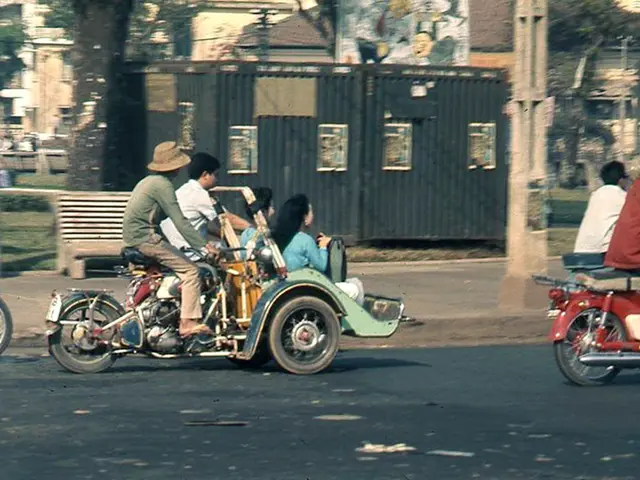Gifting second-hand items is gaining traction as a trend, driven by inflation and environmental concerns, especially among millennials.
According to a survey conducted by the German Retail Association (HDE), 60% of consumers are considering second-hand gifts, such as pre-loved jackets and used cell phones, for this holiday season. This figure is a notable increase from the 40% reported last year.
Millisitals, in particular, are embracing this trend, with 61% of respondents aged 35-44 having already given second-hand items as presents. In comparison, only 31% of those aged 55-65 have participated in this practice.
The acceptance of second-hand gifts has soared in various categories, including Home & Decor (72%), Accessories (64%), and Electricals (61%). The survey also indicates a strong preference for shopping for second-hand items online, with more than half of respondents choosing this option.
The appeal of second-hand gifts isn't just about saving money during inflation. As awareness of environmental impact increases, other factors like sustainability and uniqueness are also influencing the trend. A staggering 56% of consumers believe that second-hand gifts are more sustainable, while 42% appreciate the one-of-a-kind nature of pre-owned items.
As the demand for second-hand gifts grows, platforms like Amazon are capitalizing on the shift towards online shopping. Consumers can now find a wide range of pre-owned goods at their fingertips, making eco-friendly and affordable shopping a breeze.
Stories like that of a thrifty shopper discovering a beloved ceramics brand post-Christmas show the appeal of second-hand items. This evidence of growing interest in second-hand shopping suggests that it may become a staple of holiday shopping in the years to come.
References: 1. 2. 3. 4.
Enrichment Data: The increased popularity of second-hand gifts can be attributed to several factors:
- Sustainability Concerns:
- With awareness of environmental impact growing, consumers are becoming increasingly conscious of their shopping habits. Over one in five British consumers have cut back on apparel purchases due to sustainability reasons. Additionally, there's been an increase in second-hand clothing purchases, which shows a shift towards more eco-friendly choices[3].
- Inflationary Pressure:
- While inflation is leading to higher prices for many essential items, shoppers are finding ways to adapt. Premium own-label options have seen significant growth despite higher prices, but struggling shoppers may still opt for trusted brands due to affordability concerns[2].
- Online Shopping Trends:
- As more and more consumers opt for online shopping, platforms like Amazon are leading the way. This trend provides an opportunity for the discovery and purchase of second-hand items, which are often featured on online marketplaces like eBay and Poshmark[2].
- Post-Christmas Embracing:
- Second-hand shopping isn't only popular during the holidays. Stories like the one about the thrifty shopper who found a beloved ceramics brand at a second-hand store show the ongoing appeal of pre-owned items beyond the festive season[4].
Enrichment Insight: By buying and giving second-hand items, consumers can help contribute to a more sustainable and eco-friendly future while also saving money during inflationary times. Online shopping platforms make it easy to discover and purchase pre-owned goods, making this trend an accessible and attractive option for many shoppers.







